 June 13, 2019 John E. Ross, KD8IDJ, Editor
| ||||||
Paul Bourque, N1SFE, Joins ARRL Headquarters Staff as Contest Program Manager Paul Bourque, N1SFE, of Middletown, Connecticut, has joined the ARRL Headquarters staff as Contest Program Manager. He succeeds Bart Jahnke, W9JJ, who recently was promoted to the post of ARRL Radiosport and Field Services Manager. Licensed since 1994, Bourque's interest in radio began when, as a youngster, he listened for distant AM stations, and he later developed a career involving various aspects of broadcasting.
Because being an Amateur Radio operator had opened several professional doors for him, Bourque said, "The opportunity to give back to this hobby as Contest Program Manager really appealed to me." Bourque, who grew up in Newington, remarked that working at ARRL Headquarters "is like coming home." In his early years as a radio amateur, he was more of a casual contester, and it "was about making contacts," he conceded. Today, though, he has become passionate about getting people active and on the air. As Contest Program Manager, Bourque wants to find ways to get newer hams into contesting, and to dispel the idea that you need tons of equipment to participate. Bourque's other interests include cooking, astronomy, photography, and meteorology. Rick Murphy, K1MU, to Receive ARRL President's Award At its May 20 meeting in Dayton, Ohio, the ARRL Executive Committee, acting on behalf of the Board of Directors, conferred the prestigious ARRL President's Award on Rick Murphy, K1MU, one of the unsung heroes of Logbook of The World (LoTW). The President's Award recognizes individuals showing long-term dedication in support of ARRL programs. Murphy "Rick is richly deserving of this honor for his efforts to make the TQSL application and Logbook of The World more accessible to all users," said ARRL President Rick Roderick, K5UR. "Rick Murphy embodies the spirit of unselfish volunteerism that represents the best of Amateur Radio." An information security professional, Murphy, who lives in Annandale, Virginia, is coauthor (with Rickland D. Hollar) of the book Enterprise Web Services Security. He's a volunteer Incoming QSL Bureau card sorter for the 3rd call district and a past president of the National Capital DX Association. The President's Award plaque bears the likeness of ARRL's cofounder and first president Hiram Percy Maxim, W1AW. Tuning Electrically Short Antennas for Field Operation An article,"Tuning Electrically Short Antennas for Field Operation," by two well-known amateurs, appeared in Microwave Journal. Authored by QEX Editor Kai Siwiak, KE4PT, and award-winning researcher Ulrich Rohde, N1UL, the article points out that both Amateur Radio and military applications exist for 20 W battery-powered radios equipped with whip antennas. "In general, the whip antenna [that] makes the radio portable is not optimized for signal propagation: A whip antenna has no ground return or proper counterpoise," the article notes. "While some users drag a wire of up to 8 meters behind, this is not an ideal solution."
As the article explains, electrically short antennas -- typically 0.1 λ or shorter -- look like a capacitor, with a typical capacitance of 25 pF per meter of length. "At 2 MHz, where the wavelength is 150 meters, an inductor of 84 μH is required for resonance," the article says. But just getting a good VSWR is not all there is to it. Rohde told ARRL that loading coil placement in a short vertical antenna is critical, and "the greater the elevation of the coil, the better the radiation. He said that "center loading" -- he considers the "best compromise" to be more on the order of two-thirds' loading -- can dramatically affect both the antenna's transmitting and receiving performance, as opposed to base loading, as found with popular so-called screwdriver antennas. Radials of some sort also are essential. As the article points out, "With center loading, both the radiation resistance and integrated surface are larger, which are better for radiation." Inductors are the lossy components of an antenna tuner, while capacitors "are infinitely better." The authors conclude that, for optimal operation, antenna radials should be 0.25 λ, with one sufficient for tuning, and up to four producing a symmetrical azimuth. "Connecting the HF radio ground to a large metallic object is a good choice," the article said. Ulrich told ARRL that optimizing an antenna in the manner the article describes will produce "significantly better" signal reception, although a short antenna will also have a narrower bandwidth. The objective should not be to get a good VSWR but to keep in mind that there's a difference between resonance and radiation. "These requirements for optimum antenna performance make HF manpack radios somewhat complicated and unattractive," the authors concede. "Nonetheless, the well matched and radiating antenna provides the most success, and some of these highly portable radios provide vital communications in disaster areas -- recently in Puerto Rico and South Florida." So Now What? Podcast "Highlights from Hamvention" is the focus of the new (June 13) episode of the So Now What? podcast for Amateur Radio newcomers. It will feature segments from Tony Milluzzi, KD8RTT, and Andy Milluzzi, KK4LWR, of The Collegiate Amateur Radio Initiative (CARI); Teachers Institute instructor Tommy Gober, N5DUX, who was at the ARRL Lifelong Learning booth this year; Jet Jurgensmeyer, KE0UWZ, of Last Man Standing, and Space Weather Woman Tamitha Skov, WX6SWW. Two aspiring hams -- Sarah Byrne, who works in emergency management, and Valencia Simpson, who has assisted ARRL at Dayton Hamvention® for the past 5 years -- also will be guests.
So Now What? is sponsored by LDG Electronics, a family owned and operated business with laboratories in southern Maryland that offers a wide array of antenna tuners and other Amateur Radio products. ARRL Communications Content Producer Michelle Patnode, W3MVP, and ARRL Station Manager Joe Carcia, NJ1Q, co-host the podcast. Presented as a lively conversation, with Patnode representing newer hams and Carcia the veteran operators, the podcast will explore questions that newer hams may have and the issues that keep participants from staying active in the hobby. Some episodes will feature guests to answer questions on specific topic areas. Listeners can find So Now What? on Apple iTunes, Blubrry, Stitcher (free registration required, or browse the site as a guest), and through the free Stitcher app for iOS, Kindle, or Android devices. Episodes will be archived on the ARRL website. The K7RA Solar Update Tad Cook, K7RA, Seattle, reports: The long string of days with no sunspots continues, with spots last observed nearly a month ago, on May 18. Predicted solar flux for the next 45 days is 70 on June 13 - 20, and 68 on June 21 through July 27. The predicted planetary A index is 12 and 8 on June 13 - 14; 5 on June 15 - 23; 8, 12, and 8 on June 24 - 26; 5 on June 27 - July 5; 10, 8, 10, and 8 on July 6 - 9; 5 on July 10 - 20; 8, 10, and 8 on July 21 - 23, and 5 on July 24 - 27.
Sunspot numbers for June 6 - 12 were 0, 0, 0, 0, 0, 0, and 0, with a mean of 0. The 10.7-centimeter flux was 68.9, 68.9, 68.4, 68.4, 68.9, 69.7, and 69.5, with a mean of 69. Estimated planetary A indices were 3, 4, 18, 6, 3, 3, and 4, with a mean of 5.9. Middle latitude A index was 4, 6, 14, 8, 4, 3, and 5, with a mean of 6.3. A comprehensive K7RA Solar Update is posted Fridays on the ARRL website. For more information concerning radio propagation, visit the ARRL Technical Information Service, read "What the Numbers Mean...," and check out K9LA's Propagation Page. A propagation bulletin archive is available. Monthly charts offer propagation projections between the US and a dozen DX locations. Share your reports and observations. Just Ahead in Radiosport
See the ARRL Contest Calendar for more information. For in-depth reporting on Amateur Radio contesting, subscribe to The ARRL Contest Update via your ARRL member profile email preferences. QRZ Institutes Password Security, Seller Verification Programs In an effort to combat fraudsters and password phishers, the popular QRZ Amateur Radio website is offering the option of establishing two-factor authentication (2FA) for its registered users. The site's founder and president, Fred Lloyd, AA7BQ, explains that 2FA secures a user's password on the site. "With 2FA, your actual password becomes nearly moot, and revealing it to a crook has no detrimental effect," Lloyd told ARRL. "With 2FA, Lloyd said that when a user logs into the site with 2FA, the validation for the session is stored in the user's browser as an encrypted cookie that can live for up to 30 days. He said QRZ.com staffers have been using 2FA successfully for a couple of years now. A video has been posted that demonstrates how to get started with 2FA without using a cell phone to receive codes. Although 2FA will not become a requirement in order to log onto QRZ.com, a separate seller verification system has been instituted for anyone marketing ham gear via the Swapmeet forum. As of July 1, only those enrolled in the Verified User program will be able to list in that forum. Users may opt out of the Verified User program for the rest of the site. "While verification is available to anyone on QRZ, it is required only in the Swapmeet section," Lloyd told ARRL. "Lately, there has been as many as a scam per day in the Swapmeet, and sometimes a popular radio model will be sold several times before it comes to our attention. One false listing can net any number of victims before it's discovered."
Lloyd explained that these fake listings are being placed using the accounts of users who have been tricked into giving out their log-in passwords though elaborate phishing schemes. "There is virtually nothing that QRZ can do to prevent phishing attacks, as a great many users never even know that they've been hacked," Lloyd allowed. "Scammers find it relatively easy to trick the users into supplying their actual passwords." Setting up two-factor authentication is the first step to becoming a QRZ.com Verified User. Information on becoming a Verified User is available to those registered on the site via their Account page, accessible from the QRZ main page. Once they've secured their accounts with 2FA, members will have to submit photographic identification to QRZ in order to complete the Verified User process. Read more. WSJT-X Developer Posts Observations on Using FT8 in June VHF Contest WSJT-X developer Joe Taylor, K1JT, has tentatively concluded that there are good reasons to use both FT4 and FT8 in ARRL VHF contests. The latest beta version of FT4 was not available for the event, but Taylor noted that FT4 will be available for future contests (the current -rc7 beta version will not be usable during ARRL Field Day either). Taylor, who was active in the VHF event over the past weekend, made the remark in a post to the Packrats reflector. Taylor reported making 433 contacts (21 dupes) in 152 grids, all, by and large, on FT8. "Most of the time there was enough sporadic E and tropo-scatter to keep things busy using FT8," Taylor observed. "In this event, meteor scatter using MSK144 was not, score-wise, time efficient." Taylor said he operated from home only on 6 meters and only on digital, "mainly to see how FT8 plays in a June VHF Contest." He operated for 21 of the contest's 33 hours and left his receiver running on 50.313 MHz when not in the shack.
"During the contest period, I decoded 45,375 transmissions from others in the 4 kHz window starting at 50.313 MHz," Taylor recounted. "That's an average of about 11 decodes per 15-second receive cycle." Taylor said he seldom, if ever, found that a single 3 or 4 kHz window was "too crowded" with activity. "There were nearly always some open spots, even with nearly everyone in the first 2.7 kHz of the window," he said. Taylor also speculated as to how the twice-as-fast FT4 might have fared, being 4 dB less sensitive than FT8 and having an 80 Hz bandwidth instead of FT8's 50 Hz bandwidth. "My guess is that something like 80 - 85% of my QSOs could have been completed using FT4, most of them in half the time than it took in FT8," Taylor said. Wireless Power Transmission Prompts Discussion in ITU-R Study Group The emerging wireless power transmission (WPT) technology and associated applications came under closer scrutiny during the May/June meeting of International Telecommunication Union Radiocommunication Sector (ITU-R) Study Group 1 and its Working Parties. Participants wrapped up 7 days of sessions in Geneva on June 7, with International Amateur Radio Union Region 1 (IARU-R1) President Don Beattie, G3BJ, representing the IARU. The primary concern over WPT centers on its interference potential. "Work was advanced on reports on WPT at 100 - 148.5 kHz for low-power charging of portable devices, for WPT for electric vehicles (WPT-EV) at around 20, 60, and 85 kHz, and for 'beam' WPT for remote charging," IARU Region 1 reported. "All of these technologies have the potential for harmful interference to radiocommunication services if not carefully managed, particularly the harmonics of the WPT systems." The IARU has submitted formal studies on the impact of WPT on the Amateur Service, and these have been incorporated into a single completed report and will inform a new recommendation being developed on WPT emissions. IARU says it's advocating "proper emission limits" to protect radio services and is working with other spectrum users and administrations that share its concerns.
The ITU meetings discussed emerging proposals for WPT-EV emission limits from the International Special Committee on Radio Interference (CISPR), where there is a level of concern that these limits fall short of providing the necessary protection to radiocommunication services. Founded in 1934, CISPR sets standards for controlling electromagnetic interference in electrical and electronic devices and equipment. The issue of WPT-EV is World Radiocommunication Conference 2019 (WRC-19) Agenda Item 9.1.6. In a WPT status report at the IARU Region 1 Interim Meeting in Vienna in late April, Beattie said the Amateur Service is "highly susceptible to any increase in the background noise level," such as that WPT might generate. He said frequencies being planned for WPT are 19 - 21 kHz for high power; 55 - 65 kHz and 79 - 90 kHz for medium power, and 100 - 148.5 kHz for lower power -- but still up to 2.4 kW. "WPT is generally high duty cycle, located in residential areas, and its harmonics are likely to be spread across a band of frequencies, in some cases the whole of the HF spectrum," Beattie said in his presentation to the Vienna interim meeting. Read more. Proposed WRC-23 Agenda Items Causing Concern Two proposals under discussion in Europe as possible World Radiocommunication Conference 2023 (WRC-23) agenda items "could impact important Amateur Radio frequencies," IARU reported this week. Included is a proposal from France to consider the 144 - 146 MHz band as a primary allocation to the Aeronautical Mobile service, as part of a broader consideration of spectrum allocated to that France will submit a paper containing a proposal for an agenda item for "new non-safety Aeronautical Mobile applications" at the June 17 - 21 Conference Preparatory Group meeting of the European Conference of Postal and Telecommunications Administrations (CEPT) in Prague. The 144 - 146 MHz segment is a primary global Amateur and Amateur Satellite allocation. IARU said it "views with grave concern any proposal to include this band in the proposed study" and pledged to "energetically" promote this viewpoint in the appropriate forums "to seek to obtain assurances that the spectrum will remain a primary allocation for the amateur services." Another proposal has been raised to study the 23-centimeter amateur allocation, 1240 - 1300 MHz, following reports of interference to the Galileo navigation system -- Europe's GPS system. IARU said it's aware of "a handful of cases" of reported interference to the Galileo E6 signal on 1278.750 MHz. According to IARU, joint studies have been carried out to assess the vulnerability of the system and, based on these, it considers the proposal to initiate an Agenda item for WRC-23 premature. IARU asked its member-societies to "refrain at this time from making speculative public comments about the situation until further progress has been made in regulatory discussions," and said it's ready to discuss the issue with other non-IARU societies. One European Amateur Radio organization already has called for radio amateurs to "occupy" 2 meters on June 15 for 1 hour in protest of the French proposal. In Brief...
Getting It Right The story, "Emergency Messaging Demonstration for Red Cross, FEMA is a Success, in the June 6 edition of The ARRL Letter omitted Virginia from the list of states where radio amateurs participated in the exercise. Upcoming ARRL Section, State, and Division Conventions
Find conventions and hamfests in your area.
. .
Subscribe to...
Free of charge to ARRL members...
| ||||||
 "Originally, I wanted to be a DJ, but I ended up being drawn to the technical/engineering side of the radio business," Bourque said. His journey into Amateur Radio started during his time as the host of an overnight free-form rock music show at WWUH Radio at the University of Hartford, and the station's general manager, John Ramsey, W1JNR, pushed him to get his license.
"Originally, I wanted to be a DJ, but I ended up being drawn to the technical/engineering side of the radio business," Bourque said. His journey into Amateur Radio started during his time as the host of an overnight free-form rock music show at WWUH Radio at the University of Hartford, and the station's general manager, John Ramsey, W1JNR, pushed him to get his license.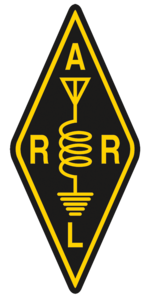 was credited for his work to upgrade and improve the LoTW TQSL software to help users more easily and successfully use LoTW. Murphy was cited for single-handedly rewriting TQSL to make it accessible to those with limited vision, to display information in languages other than English (more than 10 so far), and for providing consistent online support to users.
was credited for his work to upgrade and improve the LoTW TQSL software to help users more easily and successfully use LoTW. Murphy was cited for single-handedly rewriting TQSL to make it accessible to those with limited vision, to display information in languages other than English (more than 10 so far), and for providing consistent online support to users..jpg)
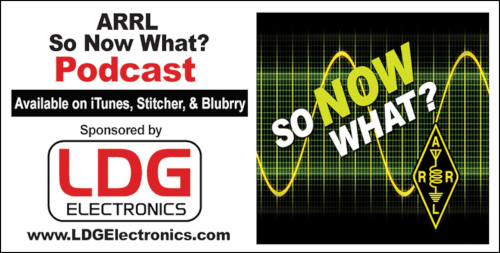 If you're a newly licensed Amateur Radio operator, chances are you have lots of questions. This biweekly podcast has answers! So Now What? offers insights from those who've been just where you are now. New episodes will be posted every other Thursday, alternating new-episode weeks with the
If you're a newly licensed Amateur Radio operator, chances are you have lots of questions. This biweekly podcast has answers! So Now What? offers insights from those who've been just where you are now. New episodes will be posted every other Thursday, alternating new-episode weeks with the 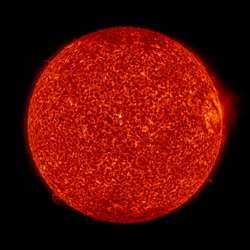 Scott Avery, WA6LIE, wrote to report his experiences during the ARRL June VHF Contest last weekend. "During the day, expecting sporadic E, we were influenced by a lot of meteor scatter caused by the Beta Taurids, a daytime event that is not advertised, as it is not seen and only radio astronomers and hams would be interested," he said. "I spent a lot of time on 6 meters, FT8 mode [and a] little SSB/CW, and the same with 2 meters. I was bombarded with pings [of] CQ TEST, and that station was gone. This happened for most of the daylight hours with [few contacts]." Avery said an opening to Japan yielded a few contacts. A Sunday multi-hop sporadic E opening to the east coast also occurred, he said.
Scott Avery, WA6LIE, wrote to report his experiences during the ARRL June VHF Contest last weekend. "During the day, expecting sporadic E, we were influenced by a lot of meteor scatter caused by the Beta Taurids, a daytime event that is not advertised, as it is not seen and only radio astronomers and hams would be interested," he said. "I spent a lot of time on 6 meters, FT8 mode [and a] little SSB/CW, and the same with 2 meters. I was bombarded with pings [of] CQ TEST, and that station was gone. This happened for most of the daylight hours with [few contacts]." Avery said an opening to Japan yielded a few contacts. A Sunday multi-hop sporadic E opening to the east coast also occurred, he said.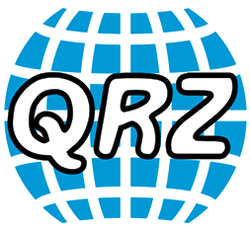 you need the one-time code, and that's the only thing that will work. It's a solid technology that is rapidly gaining in popularity."
you need the one-time code, and that's the only thing that will work. It's a solid technology that is rapidly gaining in popularity."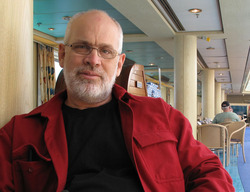
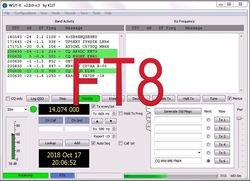
.jpg)
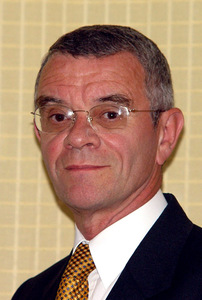
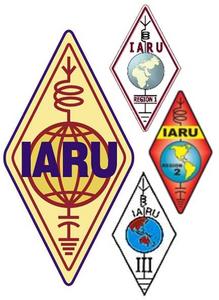 service. IARU also cautioned the amateur community against overreacting to the news.
service. IARU also cautioned the amateur community against overreacting to the news. Support ARRL as you shop Amazon Smile for Father's Day, Sunday, June 16. If you're looking for the perfect gift, we invite you to shop at
Support ARRL as you shop Amazon Smile for Father's Day, Sunday, June 16. If you're looking for the perfect gift, we invite you to shop at 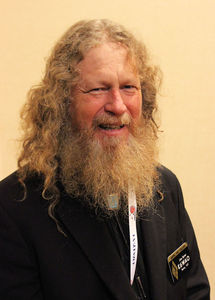 AMSAT President and ARRL Life Member Joe Spier, K6WAO, has been awarded Russia's
AMSAT President and ARRL Life Member Joe Spier, K6WAO, has been awarded Russia's 







